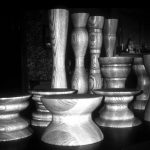philosophy
 Rather than growing out of a specific set of circumstances, style has become the individual architect’s brand on a project. As such, style is a snare. It necessarily limits, even programs, the architect’s response to the client and the project the client presents. Yet, despite this problem, developing an identifiable style remains a temptation, some might say a necessity, because of the advantages it offers for marketing one’s work; in choosing an architect, many clients seek only a name brand, a current style–a known quantity. However, many clients and projects cannot be fully served by this approach; in my work I am rethinking the relationship between style and process.
Rather than growing out of a specific set of circumstances, style has become the individual architect’s brand on a project. As such, style is a snare. It necessarily limits, even programs, the architect’s response to the client and the project the client presents. Yet, despite this problem, developing an identifiable style remains a temptation, some might say a necessity, because of the advantages it offers for marketing one’s work; in choosing an architect, many clients seek only a name brand, a current style–a known quantity. However, many clients and projects cannot be fully served by this approach; in my work I am rethinking the relationship between style and process.
Instead of something that the architect or the market imposes or overlays on a project, style must be integral to it. Aesthetic issues cannot be separate from or brought to the project; they must be among the features that the architect addresses through the same interactive process with the client that produces the program and the budget. This insures that style be more than a superficial element of the design, responding to more than the client’s architectural taste: the “style” is directly reflective of the functions of the project, the existing character of the site, and ultimately, a more comprehensive view of the client’s philosophy and aspirations.
If the client, their program and the site are seen together as a text, the architect’s job is the task of the translator. Thus the architect must not only be fluent in all aspects–semantic and syntactic–of the language of architecture, but must be inventive with it as well (proficient with both its literal and figurative dimensions). Though this approach requires the architect to reinvent themselves to some degree with each job, it avoids the emergence of a predictable repertoire of responses. Each project must be examined afresh, down to the details, meaning that even the smallest components can be a microcosm of the overall approach to the specific project, and not the same detail passed on from job to job.
Within this process, which I am continuing to develop, the client and their program–every aspect of their “program”–is fully engaged. In this way the project ultimately not only reflects the client’s needs and means, but their style as well.
Stephen Alastair Wanta AIA